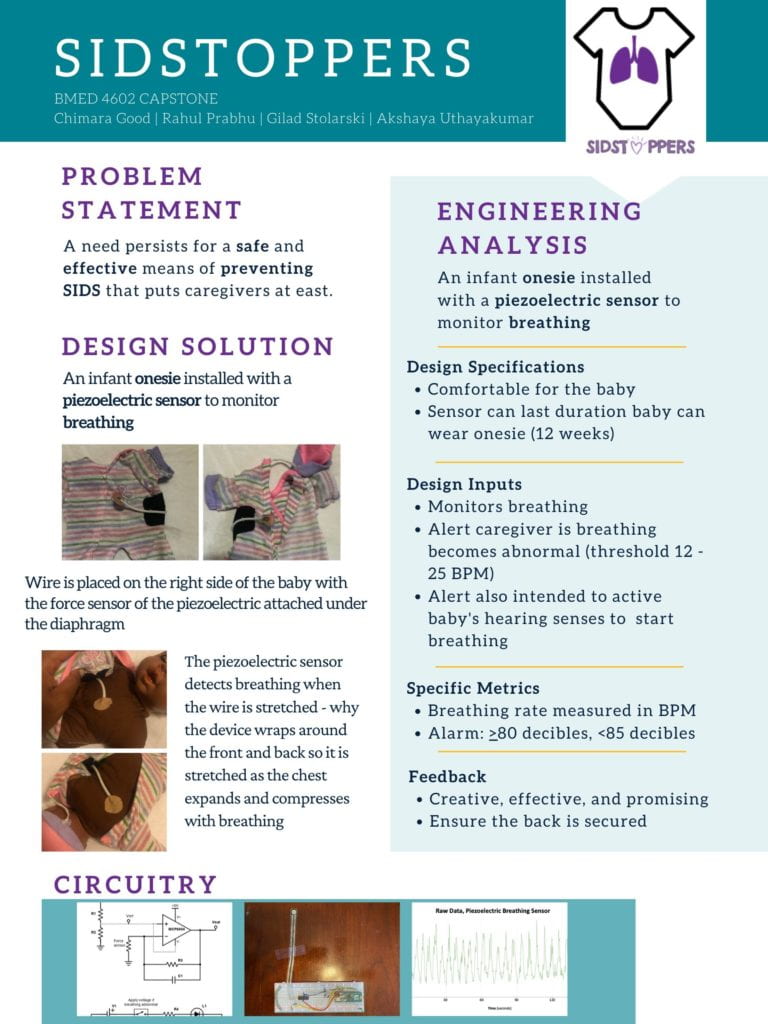A Wearable Breathing Monitoring Infant Garment to Reduce the Risk of SIDS
Student Team: SIDS-Stoppers
Akshaya Uthayakumar (LinkedIN,Resume); Chimara Good (LinkedIN); Gilad Stolarski (LinkedIN,Resume); Rahul Prabhu (LinkedIN, Resume)
Project Description:
Team SIDS-Stoppers is developing a breathing monitoring infant onesie in order to reduce the risk of SIDS. SIDS stands for Sudden Infant Death Syndrome and are deaths that happen in infants younger than 12 months of age that occur suddenly, unexpectedly, and without any obvious cause. After conducting a series of user interviews with healthcare professionals and caregivers, our team discovered that a need persists for a safe and effective means of preventing SIDS that puts caregivers at ease. Previous SIDS prevention devices fell short of at least one of these three criteria by either causing burns to the infant, raising false alarms, or only monitoring the infant’s sleeping position rather than their breathing. Because all SIDS cases are linked to abnormal breathing, our prototype was designed such that it can monitor infant breathing at all times and raise an alarm should abnormal breathing be detected. Future iterations will include Bluetooth capabilities that can remotely alert caregivers if their infant is exhibiting abnormal breathing patterns.
In order to achieve a solution, our team first compiled a list of user needs and design inputs that encompassed what materials to use to maintain comfort, what breathing ranges are considered safe, and how to optimize the sensor so that it is minimally invasive to the infant. Our solution incorporates piezoelectric sensors in order to measure the change in force output of the infant’s diaphragm as the baby exhales and inhales. To ensure accuracy in breathing monitoring, a series of thorough test protocols were developed in order to compare our device to previously tested breathing monitoring technologies. Should the project continue, these protocols will be followed in order to prove that our solution truly does reduce the risk of SIDS.

